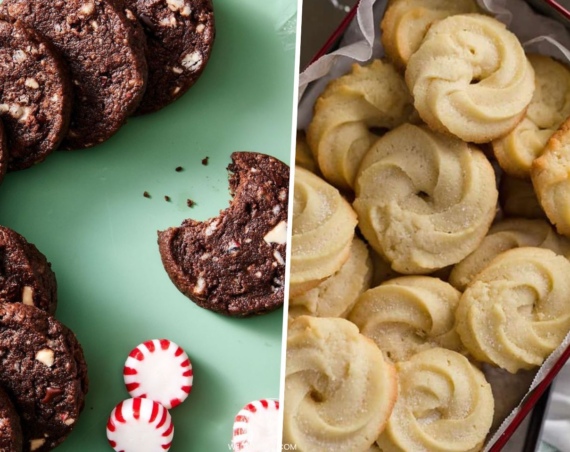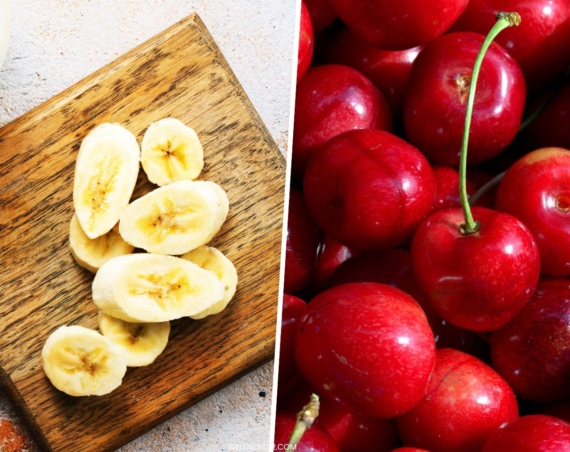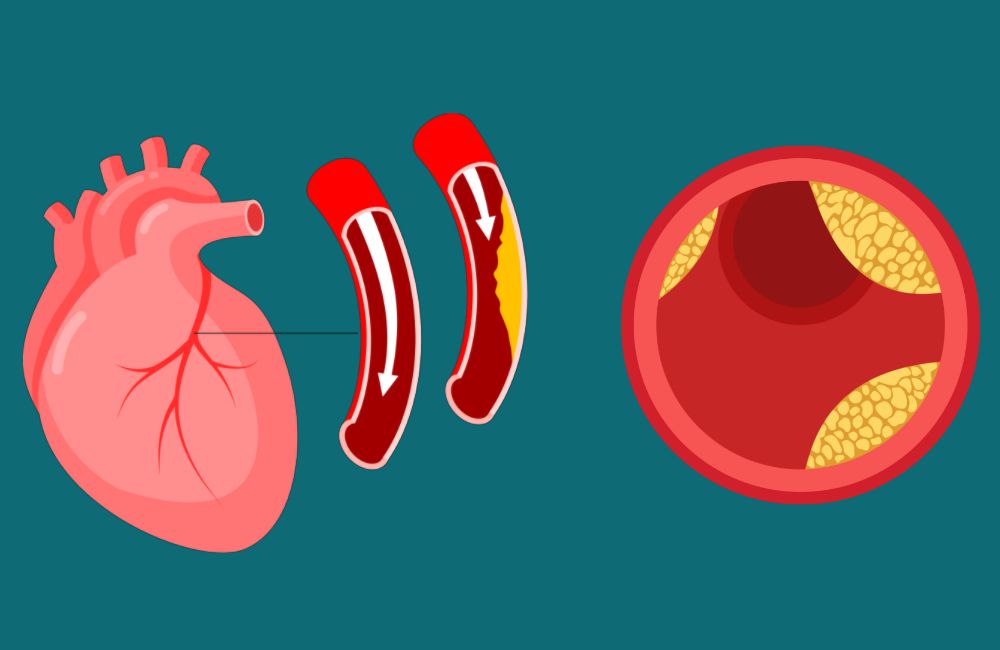
Foods that’ll help you lower your cholesterol without medication naturally, according to experts.
Cardiovascular disease is the number one leading cause of death in the US.
High cholesterol levels, particularly high LDL cholesterol, have been associated with an increased risk of heart disease.
Luckily, cholesterol can be improved through lifestyle and dietary changes.
Check out these 15 foods to help lower cholesterol and decrease your risk for heart disease. Specifically, these foods target lowering bad LDL cholesterol levels.
What Is Cholesterol?
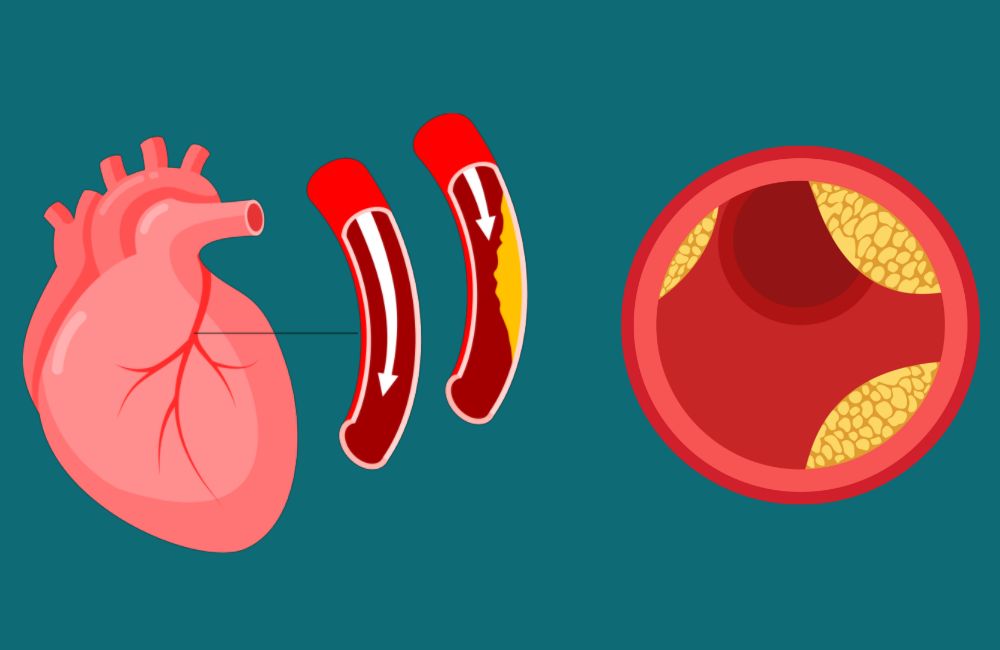
There are two different types: HDL and LDL. LDL cholesterol stands for low-density lipoprotein.
The low-density aspect is key as it is a smaller molecule. Thus, it is more likely to get “stuck” to the blood vessel wall. You may hear this cholesterol referred to as the “bad” type.
We do not want too much cholesterol, especially LDL, in our bloodstream.
HDL cholesterol also referred to as “good cholesterol”, must also be considered.
This type of cholesterol stands for high-density lipoprotein. HDL cholesterol is healthy cholesterol as it is a larger molecule and does not become as “sticky” as its LDL counterparts.
However, we need the right balance of cholesterol levels.
If HDL is too low, this is not good for our health either.
Why Is There Good and Bad Cholesterol?
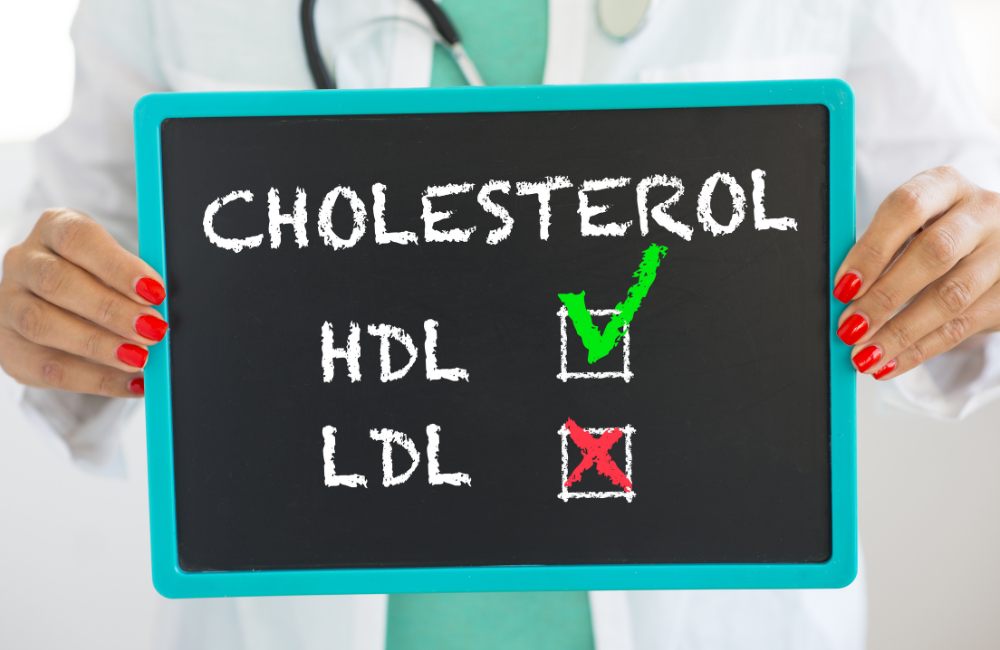
Cholesterol is a powerful building block in our body. It is composed of a waxy substance that helps make up cell walls, absorb vitamins and minerals, and regulate hormones.
We need cholesterol to live optimally.
In fact, the body makes cholesterol on its own due to the high demand for this molecule in our body.
Cholesterol often acts as a transporter.
There are two main types of transportation that cholesterol can do.
The first is from the liver to the bloodstream.
This pumps healthy building blocks to the body to help build healthy cells.
LDL cholesterol is the type that carries cholesterol throughout the body.
It transports nutrients from the liver to the cells in the body.
Elevated LDL cholesterol is associated with an increased risk for cardiovascular disease.
HDL cholesterol acts as a transporter from the cells back to the liver.
This type of cholesterol is often thought of as the “clean-up crew”.
Because it is transporting cholesterol and excess molecules back to the liver to be excreted via bile acids, HDL is beneficial.
What Are Triglycerides?
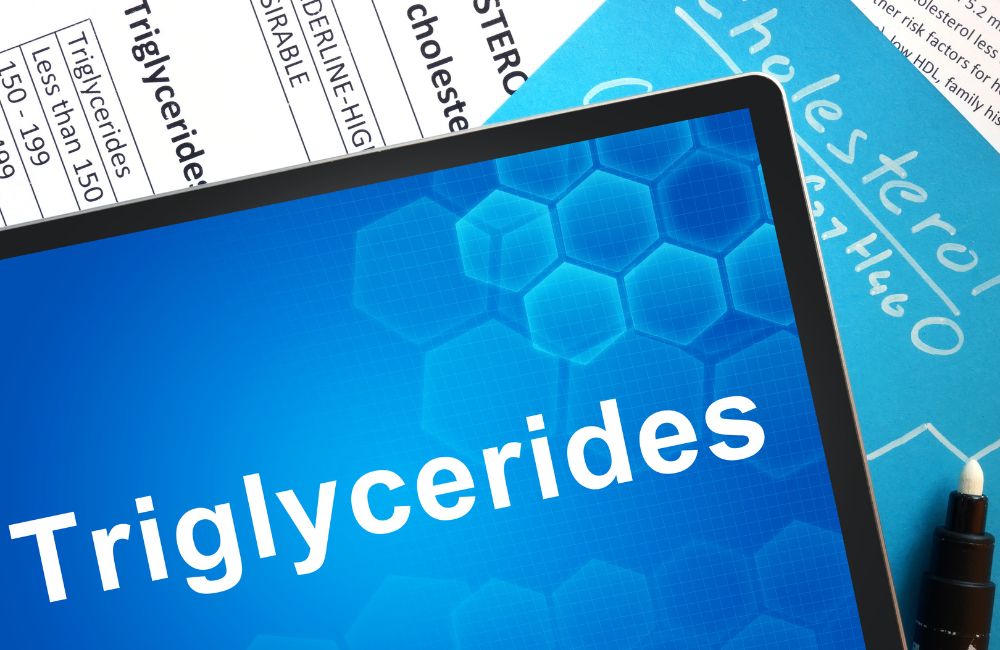
While commonly lumped into the cholesterol category, triglycerides are a different type of fat instead.
Triglycerides are a source of energy that can be broken down for fuel.
Commonly found in the bloodstream in conjunction with a high-carbohydrate diet, triglycerides are made in the liver in response to excess sugars and carbohydrates during digestion.
High triglyceride levels are associated with an increased risk for heart disease and cardiac events like a stroke or heart attack.
Talk to your doctor or a dietitian about a heart-healthy diet to lower your triglycerides!
Why Cholesterol Matters
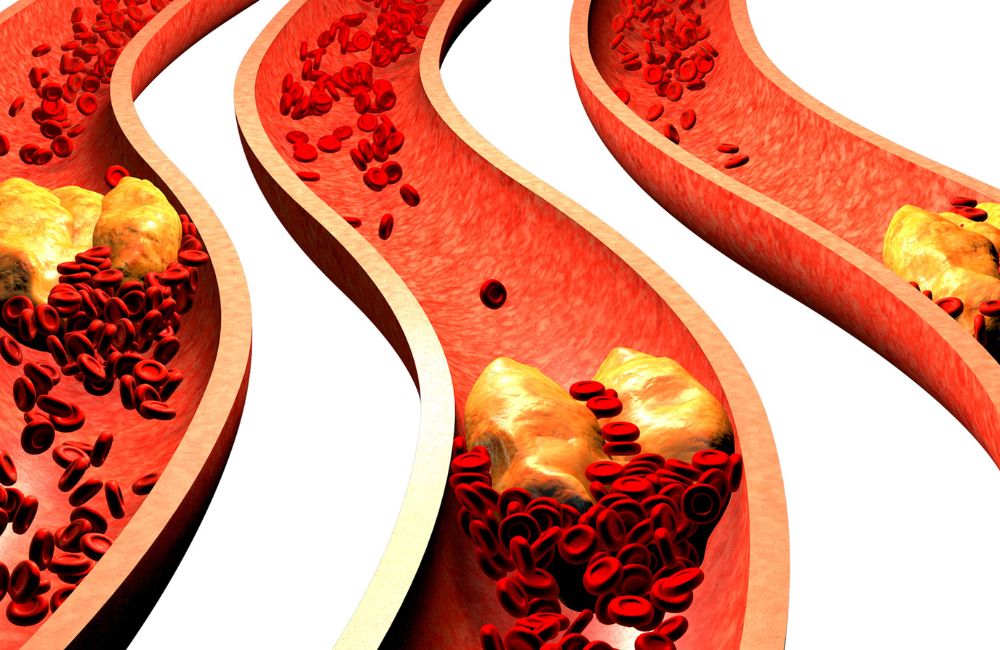
A balance of HDL to LDL cholesterol levels is needed for a healthy heart.
If LDL cholesterol is high or HDL cholesterol is low, either of these scenarios can increase the risk for cardiovascular disease (1).
Cholesterol: The Good and the Bad
Two different types of lipoproteins carry cholesterol to and from cells. LDL cholesterol carries lipoproteins to the cells.
HDL carries nutrients and excess lipoprotein molecules to the liver to be excreted.
Each of these cholesterol levels can be checked by your primary care doctor.
They can help you review your levels and find out whether or not they are in the desired range.
Bad LDL Cholesterol Levels
LDL cholesterol is the smallest molecule and can get “stuck” in the bloodstream and cause plaque buildup over time.
Long-term, elevated LDL can create blockages and cause atherosclerosis and coronary heart disease.
Atherosclerosis places one at risk for cardiac events like stroke, heart attack, or pulmonary disease.
If you have high cholesterol and cannot lower it naturally with dietary changes, your doctor might recommend a medication such as statin.
Good HDL Cholesterol Levels
HDL cholesterol is a larger molecule and is considered to be “good” cholesterol.
Healthy levels of HDL cholesterol protect against heart disease. HDL removes lipoproteins from the body and transports them back to the liver.
The liver processes and excretes it from the body via bile production. Roughly 20-35% of bad cholesterol is removed by HDL cholesterol.
Lower LDL With Diet
The best foods to lower cholesterol are fruits and non-starchy vegetables, foods high in soluble fiber, and heart-healthy fats play a vital role in managing levels naturally.
High-fiber foods like whole grains, non-starchy vegetables, okra, eggplant, barley, leafy greens, and oats can be beneficial.
While some will need medicine, such as a statin, to properly manage their blood lipid levels, many can benefit from changes to dietary cholesterol and total daily intake.
Ask your primary care doctor to help you come up with a cholesterol-lowering diet or refer you to a dietitian for a heart-healthy diet!
While you might need to consider your total daily calories, a dietitian can help you find the best diet plan for your lifestyle.
Best Foods to Eat to Lower Cholesterol Naturally
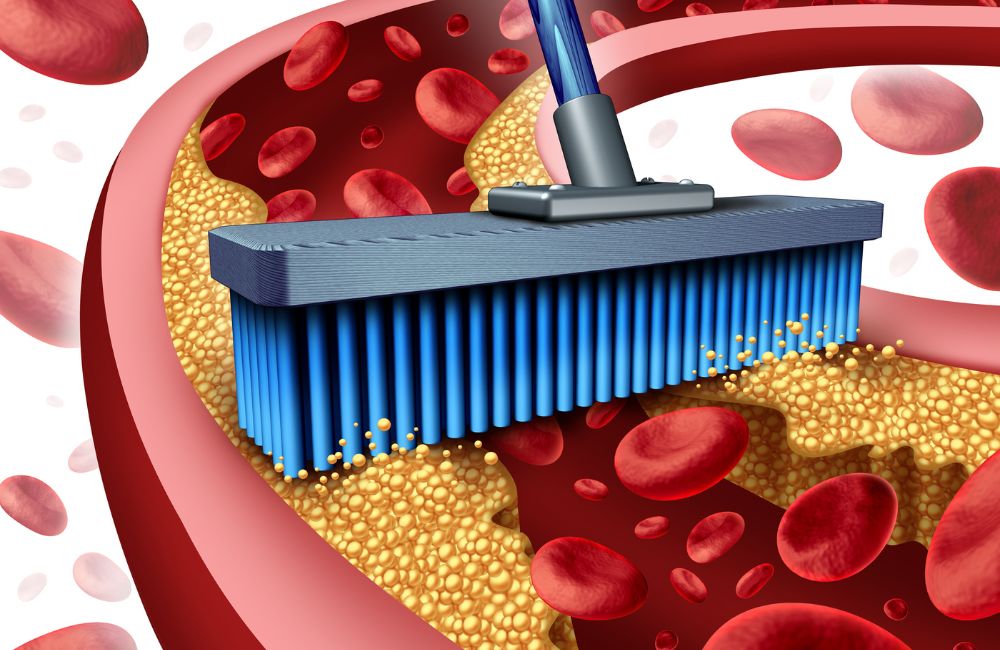
1. Oats
Swap out those Cocoa Puffs from a whole grain cereal like oats, and you are well on your way to better heart health.
Whole grains have been shown to lower cholesterol when compared to their refined grain counterparts.
Refined grains, like white bread, pasta, and white rice, have the beneficial fiber and nutrients stripped from them.
They are low in fiber and nutrients as a result. Conversely, whole grains are packed with soluble fiber, retain a high-nutrient density, and have beta-glucan.
Beta-glucan is found in whole grains and improves bad LDL cholesterol levels.
Beta-glucan can be extracted from whole grains and plant compounds and used as a medicine.
Soluble fiber is a key player in naturally reducing cholesterol levels as it binds fatty acids during digestion.
Preventing it from being absorbed, the body’s blood cholesterol naturally decreases.
Other high-fiber whole grains include barley, brown rice, and whole wheat options.
2. Olive Oil
Choosing healthier fats, like unsaturated fats, can help lower cholesterol levels.
Olive oil is particularly high in monounsaturated fat and contains no dietary cholesterol.
This oil, made popular by the Mediterranean diet, has become a staple in the kitchen for heart health.
Foods high in monounsaturated fats help lower LDL.
While vegetable oils, like safflower, corn, soybean, and canola oil have been traditionally thought of as superior, olive oil is now taking the lead for the best lipid-lowering oil!
3. Soybeans

Soybeans are high in polyunsaturated fats and low in dietary cholesterol.
They also contain plant stanols and sterols, a unique molecule that has been associated with lower LDL and good HDL cholesterol levels.
Consider a meatless Monday by using soy instead.
Soy products – including soybeans, tofu, soy milk, and fermented soy – are correlated with a decreased risk for heart disease and other cardiovascular-related incidents like heart attack, stroke, and pulmonary artery disease.
Soy contains isoflavones, lecithins, and fiber that improve cardiac health (2).
They are also a great source of calcium – a heart-healthy mineral!
4. Blueberries
Berries pack a hearty punch as they are high in vitamin C, high in soluble fiber, and low in sugar.
In fact, berries are one of the lowest sugar fruits when compared cup-for-cup to other options!
Naturally sweet and filling due to being high in pectin fiber, berries make a heart-healthy dessert or snack when you need a treat.
Try blueberries in your oatmeal or switch it up with strawberries in your yogurt, and you’ll be hooked!
5. Spinach

Popeye had the right idea here. Dark leafy greens are packed with iron, vitamin C, and electrolytes.
It’s true that the darker the green vegetable is, the more nutrients it contains – and it doesn’t get much darker than spinach!
Find various ways to get dark leafy greens in your diet: choose foods like collards, kale, and swiss chard for a variety of beneficial plant compounds like plant stanols and plant sterols!
6. Kidney Beans
Soluble fiber is the star of this legume – making it one of the highest-fiber starchy veggies on the planet!
Soluble fiber and stanols in legumes reduce cholesterol during digestion and have been correlated with improved cardiovascular disease and decreased inflammation (3).
Other legumes include peanuts, lentils, and peas.
7. Walnuts
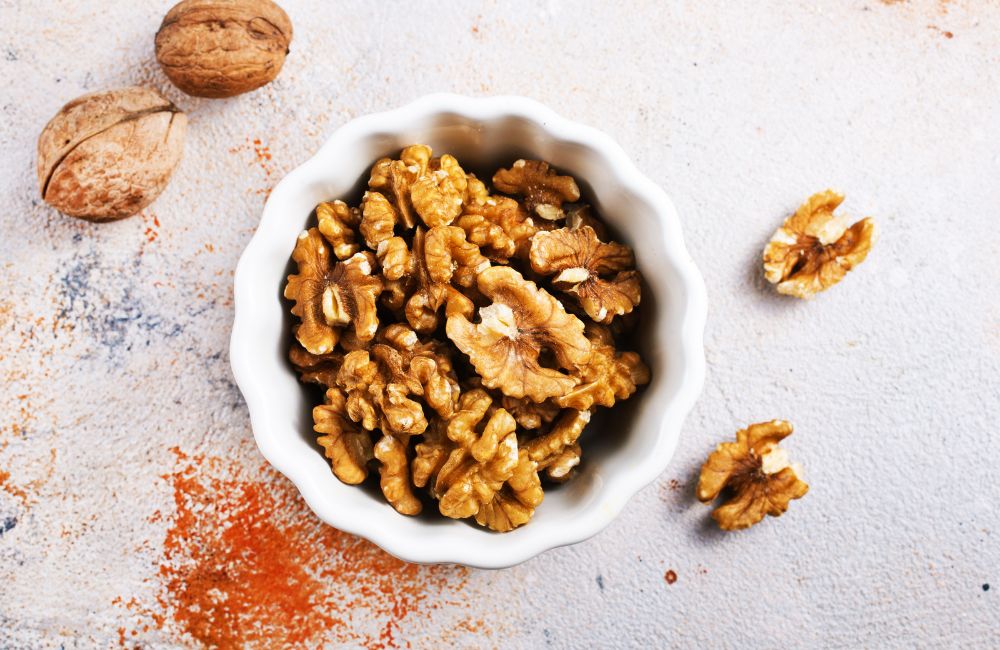
Omega-3 fatty acids and unsaturated fats work their magic in walnuts to improve triglyceride levels and increase HDL.
The recommended daily dose of 3 grams of Omega-3s, a heart-healthy fat in some nuts and fatty fish, can be found in just one ounce or about one-quarter cup of walnuts or about four tablespoons for a serving (4)!
Other heart-healthy nuts include almonds, pistachios, brazil nuts, and macadamia nuts!
8. Avocado
Avocados are high in fiber, monounsaturated fats, and fat-soluble vitamins, making them a triple threat for improving cholesterol and heart health! Their soluble fiber improves your LDL cholesterol levels.
Their healthy fats lower LDL. Avocados contain fat-soluble vitamins that improve heart health!
9. Dark Chocolate
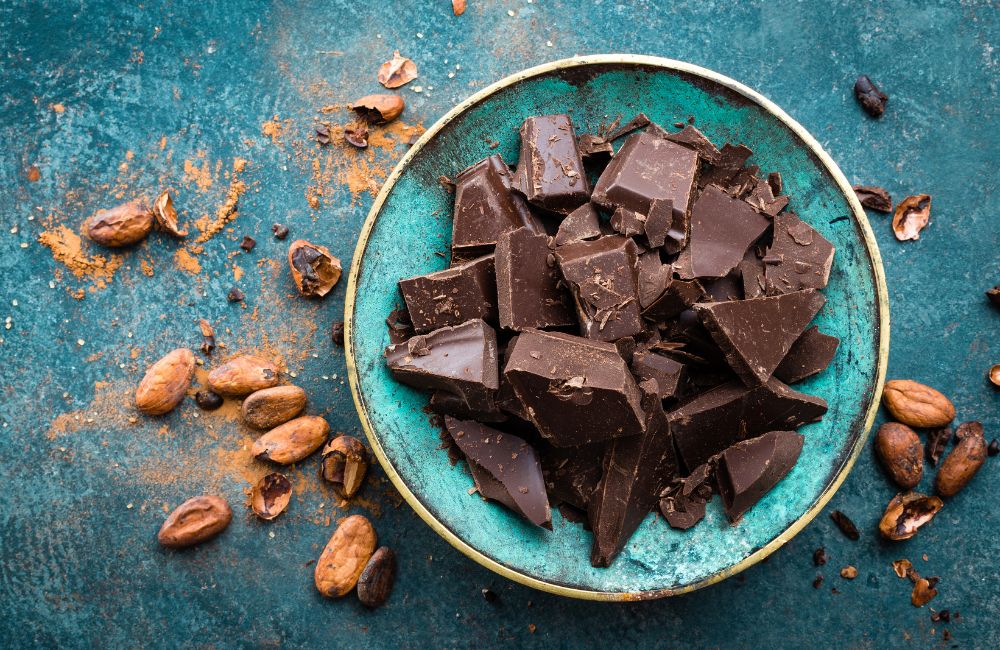
The health benefits of dark chocolate might surprise you! Dark chocolate is high in antioxidants, fiber, heart-healthy fat, and low in sugar.
Because it is rich, this delicious treat may help you fight cravings later in the day!
Using cocoa powder may further benefit you as it is sugar-free and chock-full of nutrients and antioxidants!
Everything in moderation is the name of the game with chocolate.
10. Red Bell Peppers
This bright veggie gets its color from beta-carotene, an antioxidant found in bright red and orange veggies and citrus fruits!
You may also find beta-carotene in oranges, carrots, and sweet potatoes! Bell peppers and carrots make an easy snack with hummus or paired with a light ranch dip.
11. Flaxseeds
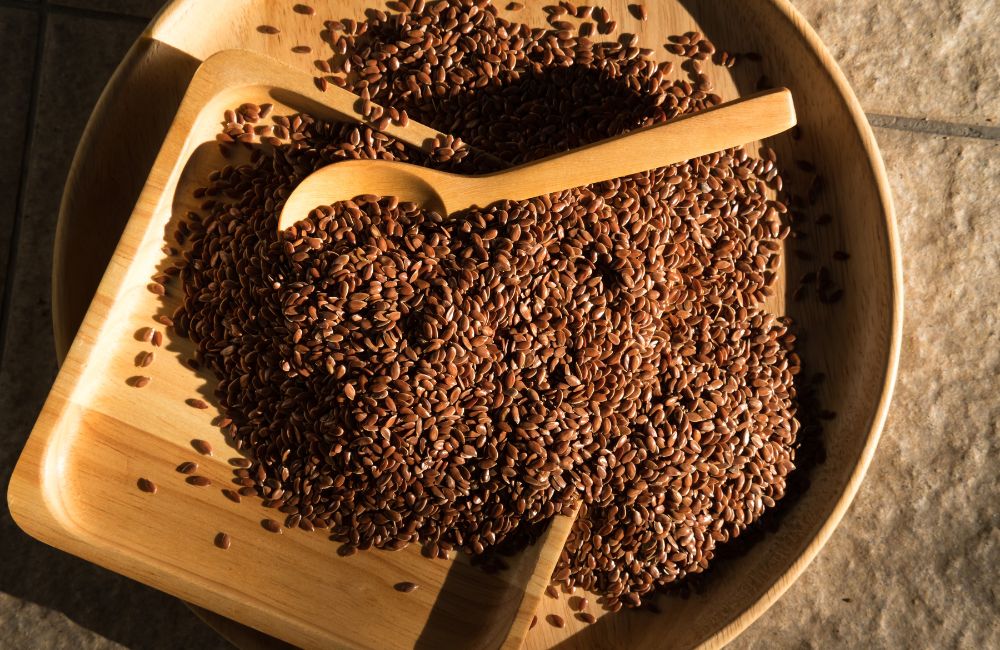
This small-but-mighty seed is packed with healthy fat and fiber.
These seeds have Omega-3 fats, fiber, and unsaturated fat.
Eating them ground tends to provide the best benefit for high cholesterol levels and LDL levels (6).
Sprinkle some over yogurt, add to smoothies, or bake into your favorite homemade bread!
These seeds are easy to use in a variety of ways!
12. Green Tea
Unlike black tea, green tea provides a unique nutrient profile due to being high in catechins and antioxidants.
This tea may lower bad LDL cholesterol levels and improve triglyceride levels – likely why it has been associated with lowered risk for heart disease and stroke!
Pair a cup of this aromatic tea with a dark chocolate product, and you’re on your way to a heart-healthy diet!
13. Hemp Hearts
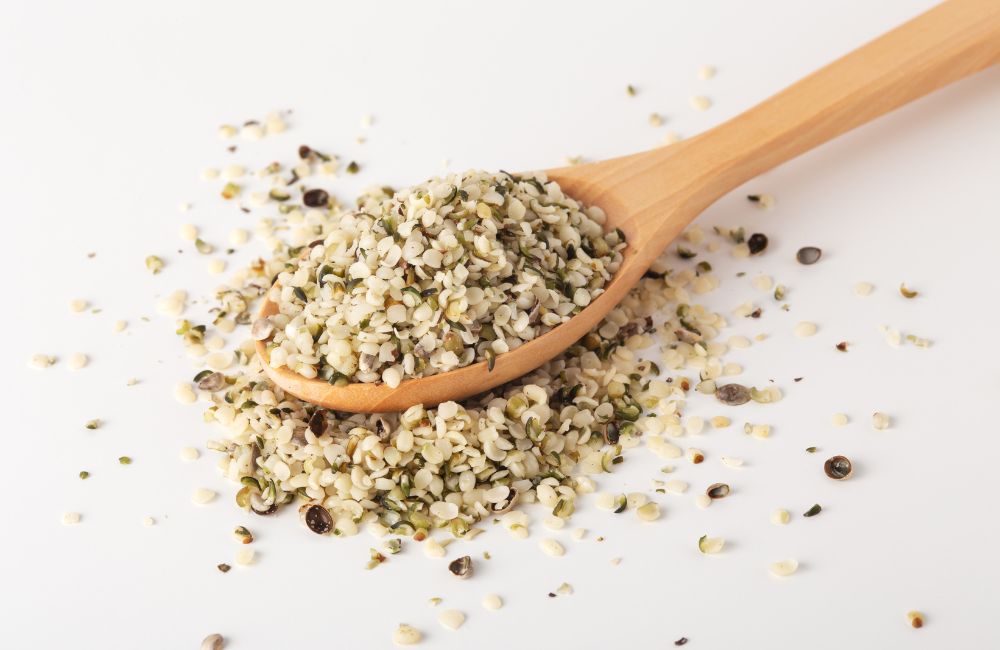
This unique product is a must-have for a cholesterol-lowering diet. High in Omega-3 ALA fat, fiber, and plant-based protein, hemp hearts add a lot of nutrition to a meal or snack.
Add to a snack, by sprinkling on top of peanut butter toast, yogurt, or in a smoothie.
You could even mix it into a salad of dark leafy greens to pack a greater punch.
Hemp hearts have been shown to improve triglyceride levels (5).
14. Tomatoes
This summer fruit is rich in cholesterol-lowering nutrients like Vitamin C, potassium, and lycopene.
Lycopene is an antioxidant that has been shown to improve heart health by increasing good HDL cholesterol levels and decreasing bad LDL cholesterol levels.
However, the benefits of lycopene are intensified in canned tomatoes!
Get creative by adding tomato sauce to your meals and you’re on your way to better LDL cholesterol levels.
15. Salmon
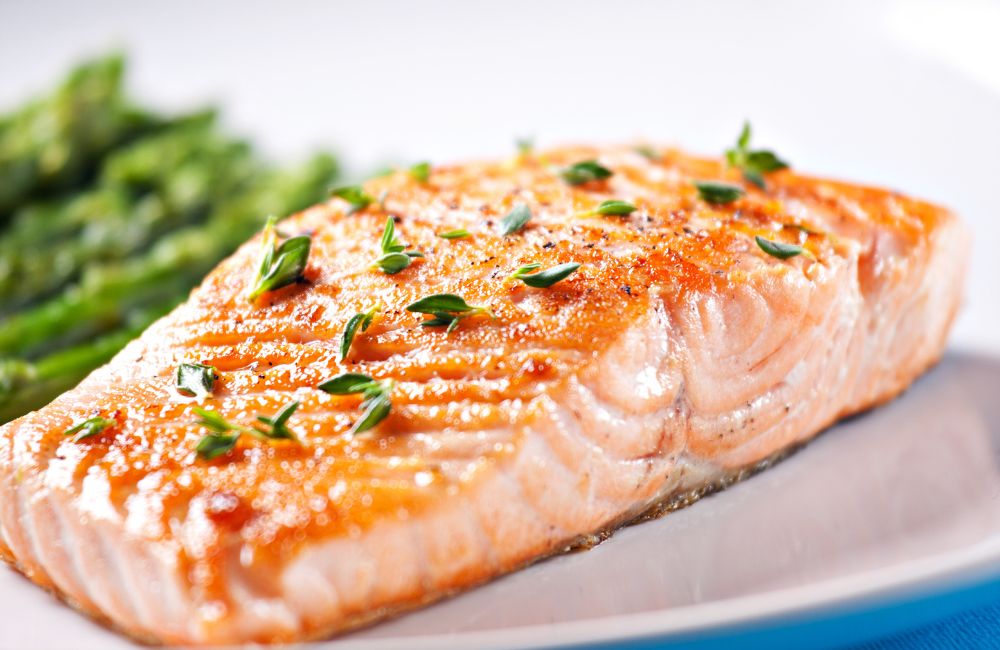
Rich in vitamin D, calcium, and Omega-3s, this fatty fish is great for your heart by lowering LDL cholesterol levels.
High in unsaturated fats and omega-3 fatty acids, salmon is one of the few fatty fish that can lower LDL cholesterol levels.
Other healthy seafood options include mackerel, herring, shrimp, tuna, and sardines.
Getting a variety of these fish ensures enough omega-3 fatty acids in your diet.
Next time you’re at the supermarket, check your seafood aisle and branch out. Your LDL cholesterol levels will thank you!
Foods to Avoid to Lower Cholesterol
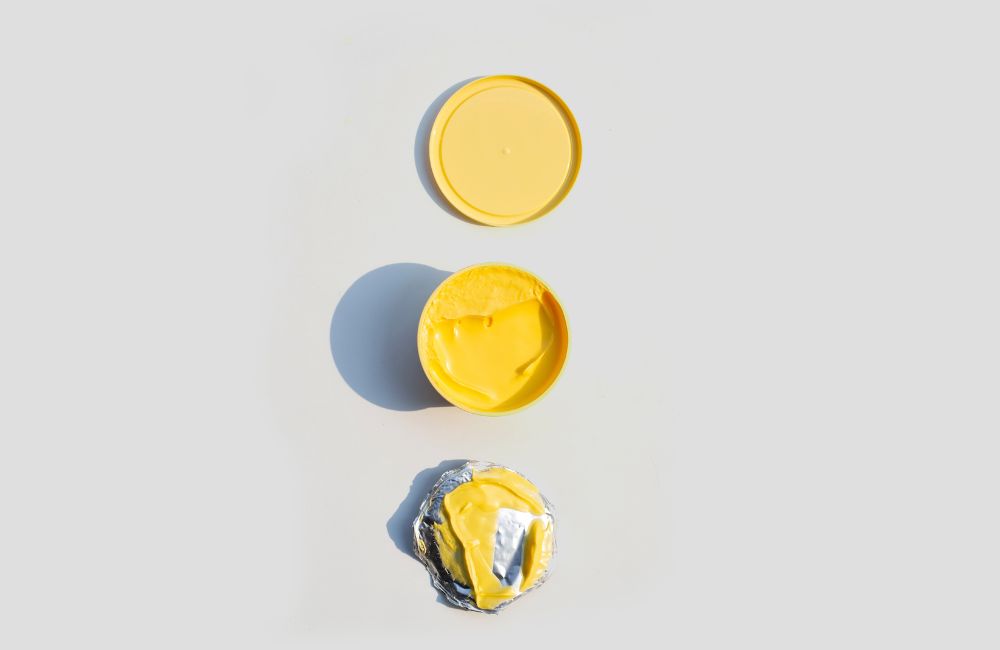
1. Margarine
Margarine, often used in place of butter, is not a heart-healthy food. Many margarine brands, such as shortening, contain trans fats, increase the risk of heart disease, and raise LDL cholesterol levels.
Some contain plant stanols, plant compounds that may improve heart health.
However, you’ll want to look for brands with zero trans fats and plant-based oils like canola, sunflower, plant stanols, and plant sterols.
2. Red meat
Most red meat and animal products like dairy products contain some dietary cholesterol.
While these foods on their own are not inherently bad, when overconsumed, they might contribute to risk factors associated with heart disease.
3. Processed Foods
Processed food really ranges from foods like cereal, and snack foods, to hot dogs and sausages.
The description of processed food is vague, but essentially means any food that has been modified from its original whole-food version.
Processed foods can increase your cholesterol level and other risk factors for heart disease, high blood pressure, and stroke.
Eating as minimally processed as you can is one of the best ways to reduce your risk for chronic disease!
4. Fast Food
Fast food is notorious for containing trans fats and other unhealthy fats and oils.
Fast food culprits like french fries, hashbrowns, and breakfast biscuits all contain high levels of trans fat and dietary cholesterol.
5. Sweets and Desserts
It’s no secret that desserts are not the healthiest foods on the planet. Ice cream, pastries, cookies, and cakes are all high in sugar and fat.
When over-consumed, dessert foods contribute to elevated LDL cholesterol levels and high triglyceride levels.
The type of fat in these products might be trans fat from added hydrogenated oils which is notorious for clogging arteries and increasing the risk for a cardiovascular event.
The Bottom Line
Manage Your Cholesterol with Diet and Lifestyle Changes. Changing your lifestyle can lower your risk for chronic disease.
Lowering your cholesterol through nutrition and exercise is vital to your long-term health.
Small dietary changes can go a long way.
Increase fruits and vegetables, add high-fiber foods, and emphasize heart-healthy fats and you are well on your way to better cholesterol and triglyceride levels!
Some other lifestyle changes include eating a variety of lean meats, getting regular physical activity, and working on stress management.
Exercise is one of the best lifestyle changes you can make to raise good HDL cholesterol levels and lower blood pressure naturally.
I recommend working with your primary care doctor to check your cholesterol levels and triglycerides, and see a dietitian to lower cholesterol using a heart-healthy diet!

